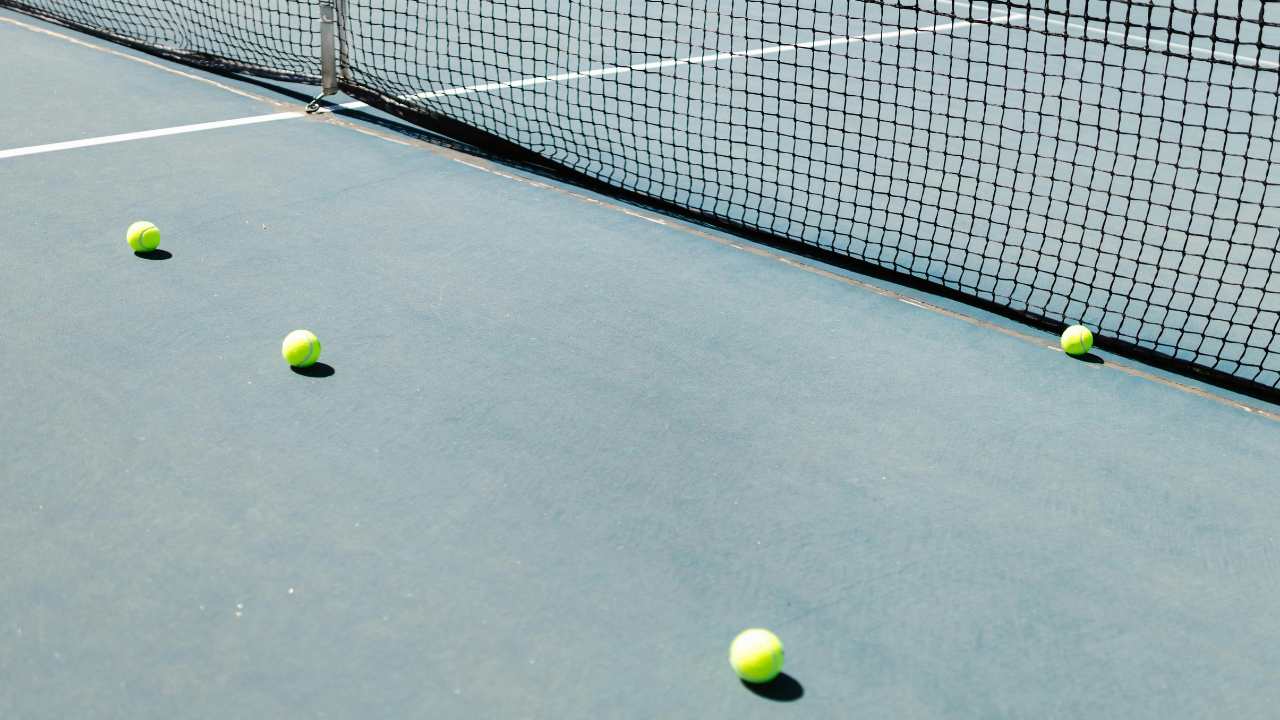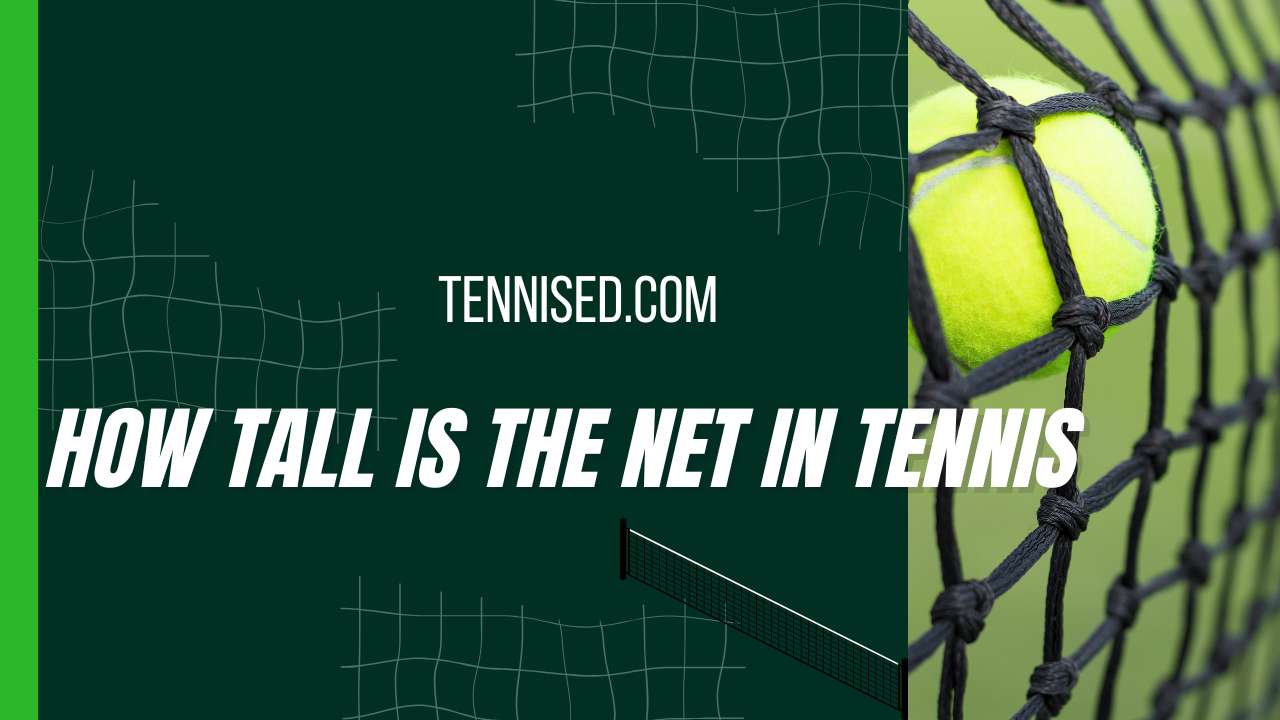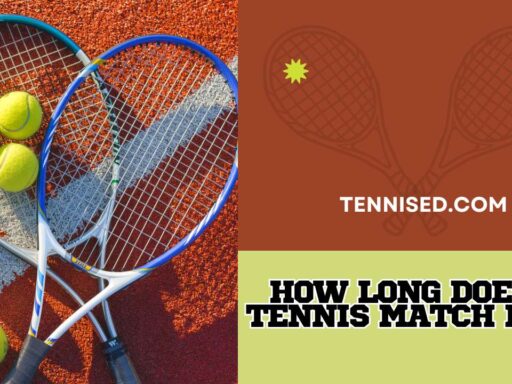Uncover the solution to the question of how tall is the net in tennis. And learn about the regulations and dimensions of this crucial component.
In the fast-paced world of tennis, precision and skill on every square inch of the court matter most. The humble net, which is often an ignored aspect in the game, lies at a crucial point between players, setting the ball’s direction and speed. It’s a must for any up-and-coming player or keen fan to have knowledge regarding the rules and implications of tennis net height. In this all-inclusive guide, we delve into what the net signifies in tennis, starting with dimensions and moving to strategic considerations.
The Unseen Battlefield
Have you thought about how the height of the net affects players’ strategies or what type of match it fosters? The net controls ball trajectory and rally tactics in tennis on professional circuits and neighborhood courts alike. This is important learning for players, coaches, and supporters.

Credit: www.pexels.com
Why it Matters: How Tall is the Net in Tennis
It modifies styles; even slight variations may make it become more aggressive or defensive. Each foot-in height change requires players to adjust their serves, volleys, and groundstrokes accordingly. Therefore, it can mean winning with an ace but would otherwise call for defending through lob shots.
A Net of History
Indeed, its history has been closely woven into that fabric – or rather different heights –of this very net. Understanding why standards have changed gives insights into evolutionary paths within sports history.
Early Days and Low Nets
In the dawn years of lawn tennis, nets hardly rose, opening up a highly aerial game with lots of technicalities involved. This altitude, only slightly higher than ankles, captures a time when strength was not synonymous with winners.
A Heightening Change
Net heights rose over time, reflecting new trends towards baseline rallies in tennis together with power serving techniques employed today by pros. Nets evolved just like rackets did against each other, creating symbiotic progressions within the sport.
The Modern Baseline
However, ankle-high nets are behind us; however they didn’t keep going up only. It was the game’s ebb and flow, as well as technological development, that caused this rise and fall.
Factors Affecting Net Height
The International Tennis Federation (ITF) and federations have put in place specific net height regulations. The midpoints of tennis nets at the center of the court horizontally across most tournaments are 3 feet (0.914 meters) for singles and 3 feet 6 inches (1.07 meters) for doubles.
This is not a random choice; the standardized net height is meant to be competitive and just. Nonetheless, such factors as weather conditions, court age and condition, or even installation details for net posts may impact slightly on the actual height. The regulation measurement is taken from the top middle white rope or metal wire on a court.
The Official Dimensions Demystified
“To keep the integrity of the game,” said Lee, an ITF licensed official, “the court must measure fifty feet in length from one baseline to another and twenty-seven feet in width from one singles sideline to the other.” With this guideline, players can easily know how wide they should hit the ball when they are playing on a doubles court.
This is because any kind of deviation from these measurements could lead to unfairness or give some players an undue advantage over others.
Why is it important to adhere to these exact measurements? It’s all about maintaining the integrity of the game. Tennis respects fair play; therefore even slight changes in those dimensions could greatly contribute towards a player having the upper hand during his serves and shots
Tactical Insights: The Influence of Net Height on Gameplay
The net height is not a passive player in the game, but rather, it shapes how rallies go on. The following are different aspects of the tennis net that can influence the game:
The Serve and Return
For the server, the net is an obstacle to overcome, demanding power and precision. It determines the ideal trajectory for a successful serve, being “over” rather than “into” it. On the other hand, returners use it as the highest point they aim for, which makes a huge difference in a competitive match.
Volleying and Passing Shots
Volleying close to the net requires exceptional hand-eye coordination because there is little room for error. Similarly, when players are going for passing shots during doubles, the lower height may compel them to be more accurate when trying to jump over it without hitting and avoid any possible interceptions.
Spin and Net Play
Players who have mastered ball-spinning tactics can take advantage of the net. A well-placed ball thrown with spin can just clear over the top of a net, landing deep into an opponent’s court, thus providing tactical surprises. Nevertheless, understanding how to clear nets is essential for executing successful volleys or drop shots that are part of net plays.
Influence of Player Skill Level on Net Height Perception
To an amateur player, however, this taller barrier can seem formidable if not insurmountable; meanwhile a professional might consider it as yet another challenge he has been trained to surmount throughout his career. To new players, though, this creates tightness in their play when faced with an unreachable net, leading to over spending their shots so as to prevent hitting it regardless of where they were supposed to land. Conversely, higher-level athletes take advantage of greater distance between themselves and their opponents by using such drops and lobs as tools.
Knowing how your level affects your feelings about what you see from above can be freeing. Remember that the net may not be as big as it seems, and with practice and honed technique, it will become a mere formality in your path to victory.
Training Techniques for Better Net Clearance
Given how critical net clearance is to tennis novices, they ought to develop various skills for mastering this art. The following are some training techniques that will help you gain control and height in your shots:
Shadowing
One of the best kept secrets of increasing net clearance is “shadowing” your shots. Just hold your racket like you are about to hit the ball and gently follow through so as to get sufficient height.
Physical Training
As much as it is about technique, height also depends on physical capabilities. For instance, working out the muscles used in serving or shooting will enable players to hit higher balls over the net. Therefore, incorporate exercises focusing on shoulder stability, core strength, leg power, etc, into your training program.
Mental Imagery
Visualize your shots before you step out onto the court. Envision how the ball should arc and where it should land on the court. Mental imagery helps the brain synchronize with muscles so that they can produce the anticipated net clearance during play.
Partner Drills
Find a partner who will give you real-time feedback as you hit the ball. Working with someone means that you can correct any misjudgment in terms of height above the net and clear it properly.
How Net Height Affects Gameplay Tactics and Strategies
The height of the net affects directly how players play in tennis tactically and strategically. For instance, a low net means there is much risk involved when it comes to attacking shots like volleys and overheads. Conversely, higher nets allow room for more errors hence encouraging defensive play – safe shots which clear the nets by wider margins.
Additionally, service strategy depends heavily on net height. One such example is when serving; if the opponent’s shot gets into your bod, then they are likely to make fewer points than when he serves wide to create angles that may pull his opponent off the court while under a higher net. It is crucial to adapt strategies depending on different matches, keeping in mind what role the ‘net’ plays here.
Tips for Players to Adjust Their Game Based on Net Height
- Adaptability is key for all players, no matter their level of expertise .Here are some key tips for adjusting your game based on net height:
- Shorten your backswing: In case of lower nets, you must reduce your swing size so as to get rid of hitting that top edge of net or risking getting stuck up by hitting it hard.
- Develop a soft feel: You need to develop some gentle touch so that you can execute drop shots or delicate volleys without fear, especially under ideal, lower-net conditions.
- Keep a lower center of gravity: In order not to tip into the net while still reaching after an incoming ball with enough time, one needs to have a lower center of gravity and move rapidly on one’s feet when the net is low.
- Evaluate your shot selection: Under a lower net, high-percentage shots that clear the net with good margin and depth are most effective. Save your go-for-broke shots for rare, higher-net opportunities.
- Serve with more spin: When faced with a lower net, hitting a top spin serve provides an added layer of protection as it causes the ball to sharply dip over the other side.
Common Misconceptions about Net Height
Although ITF has set standard measurements for nets, several myths surround these supposed changes in height. Some players argue that international tournaments have nets that appear either lowered or raised depending on which event one is watching. These apparent inconsistencies are however as a result of camera angles, seat positions and sometimes how tall or short people may seem from where they are seen playing.
Another common misconception is that nets change heights during matches, which can lead to accusations of cheating. However, current nets have been fitted with accurate checking systems so that officials can monitor them closely, thereby ensuring fair play.
Debunking Myths Surrounding the Height of the Tennis Net
In today’s technologically stringent tennis environment, conspiracy theories around altered net heights are tempting, albeit largely baseless. The installation and maintenance of tennis courts in professional settings are meticulously overseen to ensure they meet ITF standards.
Psychologists and environmental researchers present a different interpretation of this phenomenon. A windy day can make a low net appear even more challenging, while mental resilience and strategy may be the true variables at play in a player’s perception of the net height.
Practical Tips for Dealing with Net Height
- Experience and readiness are important if you want to control what the net does to your tennis. Here are some practical tips to help you deal with net height:
- Create a variety of practicing platforms: Train sessions that simulate nets of various heights will expose you to diverse playing styles.
- Nurture mental toughness: Positivity and versatile talents always minimize issues associated with tough hitting area.
- Learn opponent’s characteristics: Knowing their height or style of play helps predict their approach towards volleying. Also, try to anticipate their moves and exploit their weaknesses.
- Ask your coach: If you need person-specific guidance that suits your game plan, strength limits, then look for information from coaches who take on players’ direct opponent analysis during games played against them.
- When in doubt, opt for safety first. Never aim directly into the net. The ball should be hit softly or hard enough so it sails over.
The Future of Net Height in Tennis
Net heights have been adjusted throughout the history of tennis, suggesting it is an area for perpetual review. These days, however, players can generate more racquet head speed due to innovations in strings and frames. The ITF has tremendous responsibility – how much does it value tradition versus progress?
There is talk among some people about decreasing the distance between tennis nets and top level playing fields as this could lead to longer rallies or an easier game on television screens than today. However, such adjustments would favor those who rely on power instead. Possibly, there may be distinct measurements regarding levels of competition, which will make sure that all standards are adhered across the board about future changes in terms of linesman rules.
Frequently asked question
What is a tennis net height?
Tennis nets come in different sizes, the most common height being 42 inches at the posts and 36 inches in the center, where it sags. Also, they are 42 feet (or 12.8m) wide. Aug 26, 2022
What is the height of the net in table tennis?
The net is supported by a cord that runs between an upright post on either side and stands at a height of 15.25cm above a level surface. The outer limit of the post lies on an imaginary line drawn parallel to each sideline and passing through its center. Top of net shall be along entire length: exactly6 inches above middle of playing surface.
How many Meters is a tennis net?
There must be one yard from both singles or doubles sidelines to each post holding up the net. A net used for singles matches is usually nine-point-four-one meters wide while that for doubles should measure eleven-point-eight-eight meters. The posts will stand one point zero seven meters tall as well as having their midpoint sagging down by ninety-one centimeters.
How tall are men’s nets?
For men’s volleyball teams (this includes standing disabled men’s volleyball teams), men’s volleyball regulation net measurements must be set at not more than seven feet eleven five eights inches (7’11 5/8”) or two point four three meters high, considering older age brackets such as fifty-five years old and above, players with respective eligibility may lower nets beyond this standard dimension.
Conclusion
The height of the net should be taken into account by tennis players. Grasping how this affects your game, acknowledging its significance in sports, and practicing hard under diverse circumstances will enable you to change what was once an obstacle into a tool in your armory. Instead of controlling the environment for your gain, tennis is about mastering how to survive in it, and this principle is reflected perfectly on the net. Have fun with hitting, and let the net hang as low or high as you want it to go while making your way through tennis greatness.






